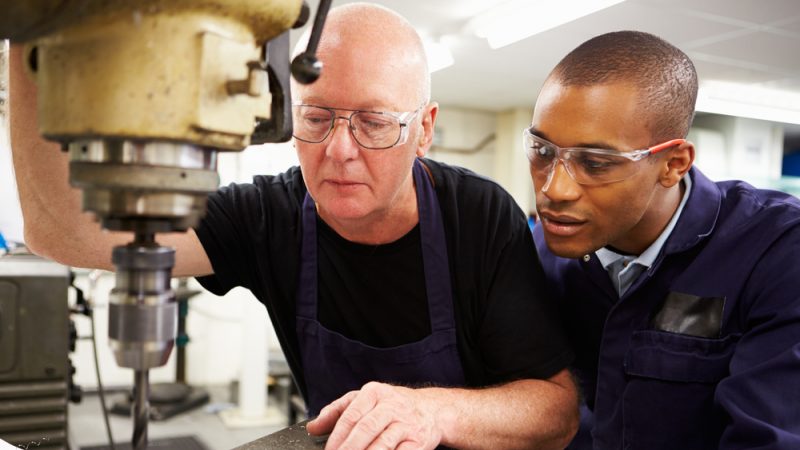International Women’s Day ideas – 2025 resources for KS2-KS4

International Women’s Day is in March so mark this important occasion in school with amazing learning opportunities via these great resources…

- by Teachwire
- Classroom expertise and free resources for teachers
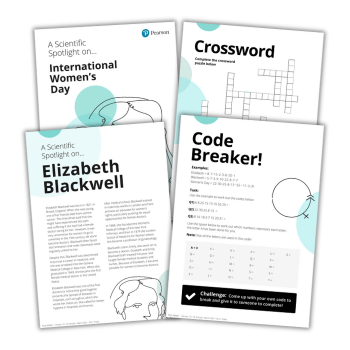
These International Women’s Day ideas and resources will help you celebrate and educate students about the remarkable contributions of women throughout history…
What is International Women’s Day?
International Women’s Day is a global celebration of the social, economic, cultural, and political achievements of women. The day also marks a call to action for accelerating women’s equality. The first International Women’s Day gathering was in 1911.
Read on for lots of International Women’s Day ideas to try at your school.
When is International Women’s Day?
International Women’s Day is 8th March. That’s a Saturday in 2025 so you may want to celebrate the day before. The theme for 2025 is “Accelerate action”.
When is International Men’s Day?
You may get a pupil asking this question. So if you don’t already know, it does exist, and it’s on 19th November.
International Women’s Day ideas and resources
Gender equality in sports
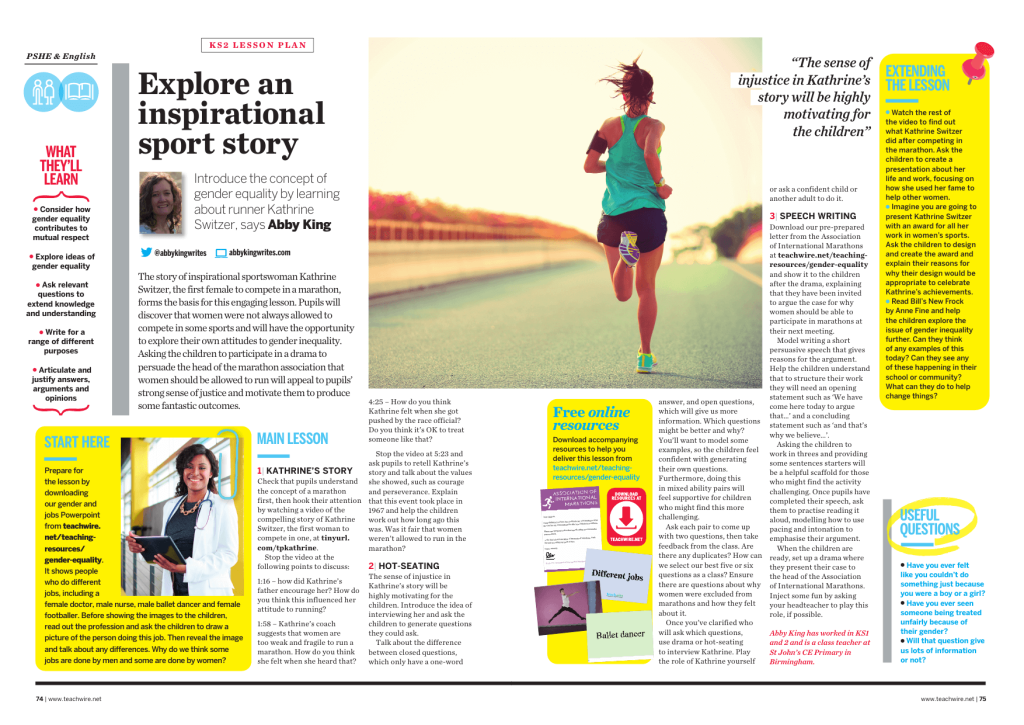
Introduce the concept of gender equality in sport by learning about runner Kathrine Switzer with this KS2 lesson idea for International Women’s Day.
Pupils will discover that women were not always allowed to compete in some sport. They’ll also have the opportunity to explore their own attitudes to gender inequality.
Elizabeth Blackwell activity pack
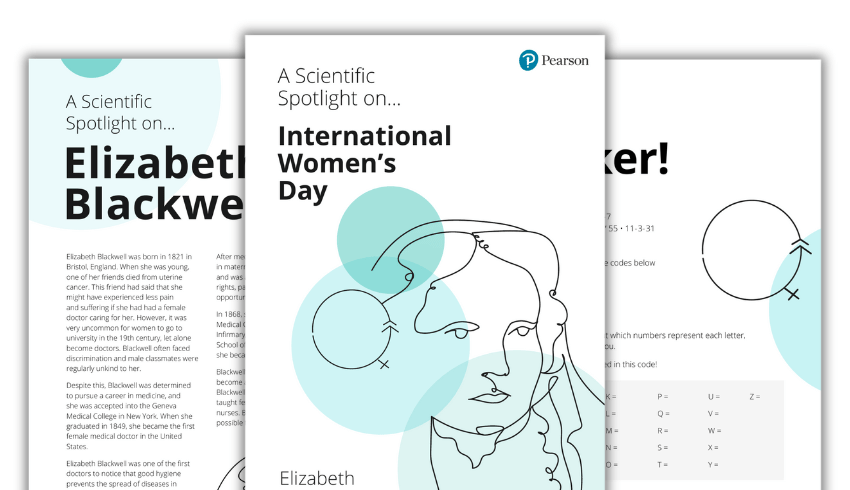
International Women’s Day is a great time to introduce pupils to Elizabeth Blackwell, the first female medical doctor in the United States.
Use this free activity booklet to explore key facts about Elizabeth. There are also fun activities and discussion starters for your students.
Gender stereotypes discussion starter
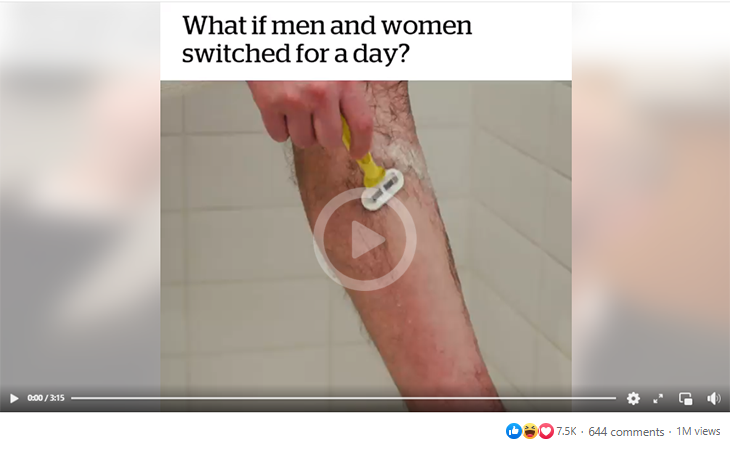
Looking for a powerful discussion starter to help teenagers better explore gender equality? This International Women’s Day video explores the question: “What if men and women switched for a day?”.
Use the accompanying teaching notes to discuss societal expectations, stereotypes and discrimination regarding women’s advancement.
Classroom activity cards
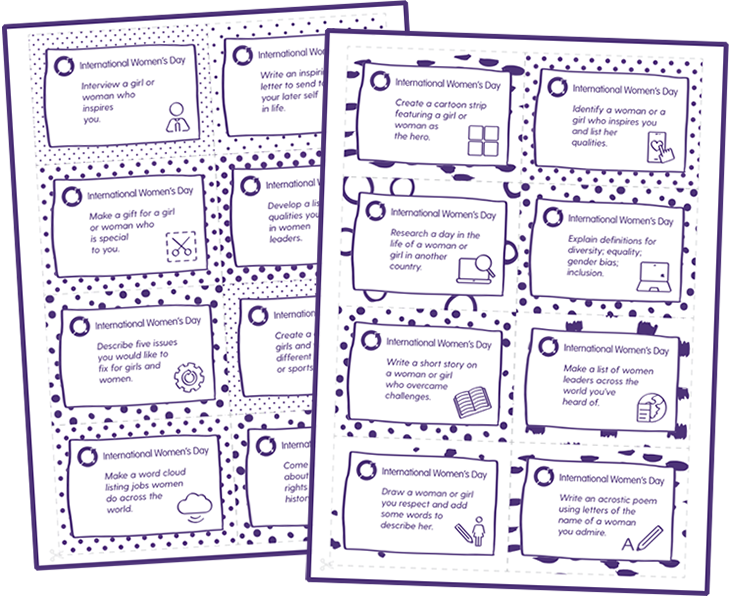
This International Women’s Day idea involves using printable activity cards to engage children in activities and conversations to inspire and reinforce an inclusive mindset. Cut up, mix up, then lucky dip the options.
Invite children and students to add their own activity for friends. Or you could invite children to explain and showcase their efforts and thinking in a short presentation.
Social change KS2 history lesson
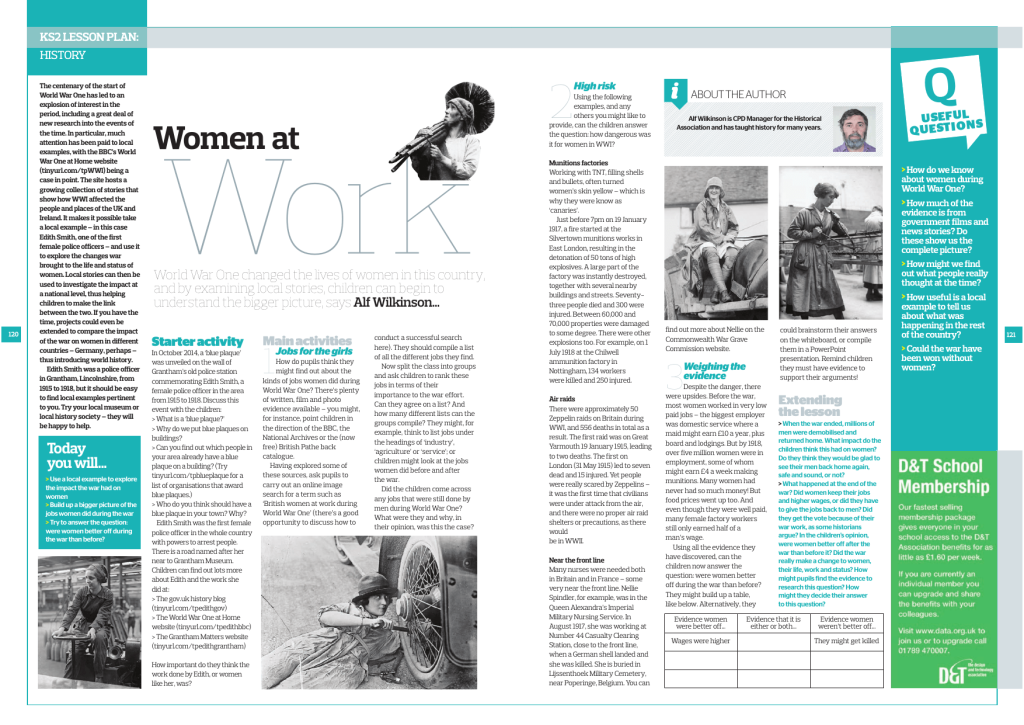
Use a local example to explore the impact the war had on women with this KS2 history lesson plan. Pupils will build up a bigger picture of the jobs women did during the war. They’ll try to answer the question: were women better off during the war than before?
Greta Thunberg resources

Greta Thunberg is an excellent focus for International Women’s Day in the classroom. In this free Topical Tuesday PDF from The Week Junior you can read a news report on Greta’s activism and then try four different activities.
For other International Women’s Day ideas themed around Greta Thunberg, try this KS1/2 assembly about how individuals can make a difference. Finally, there’s this Greta and climate change reading comprehension pack for KS2. All of these resources are from literacy resources website Plazoom.
Female STEM role models
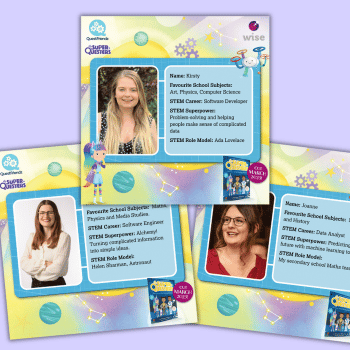
Help engage girls in STEM subjects, explore inspirational female role models and create your own STEM hero with these free resources.
Active Allies gender stereotypes resource
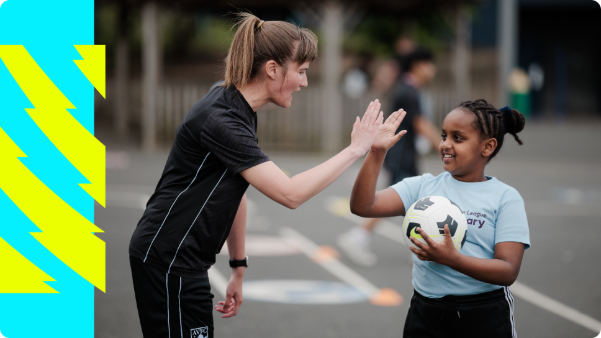
In this Active Allies resource pack for KS2 from Premier League Primary Stars, pupils will learn about gender stereotypes and how to challenge them.
Created in partnership with Nike, the pack contains a pupil activity pack, teacher toolkit and assembly.
Colouring pages
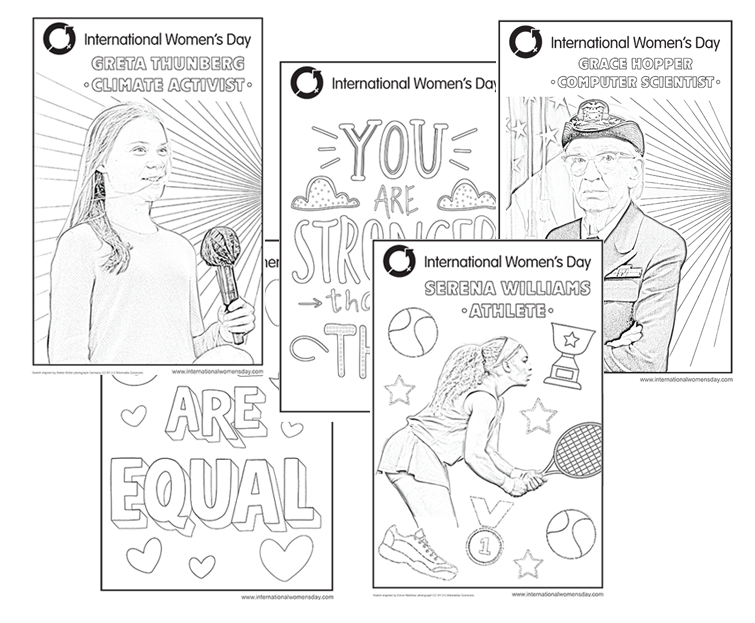
Which women inspire your class and why? Choose an inspirational woman or motivational quote from these free colouring pages and get colouring! Use the moment to reflect upon and discuss the qualities and strengths you admire in women.
Little Leaders resources
These five, hour-long lessons for KS1/2 are based around three ‘Little Leaders’ books by Vashti Harrison, including Bold Women in Black History and Visionary Women around the World.
This International Women’s Day idea encourages pupils to unleash their own little leaders and create a unique and visionary message of inspiration for themselves and the world.
Suffrage movement resources
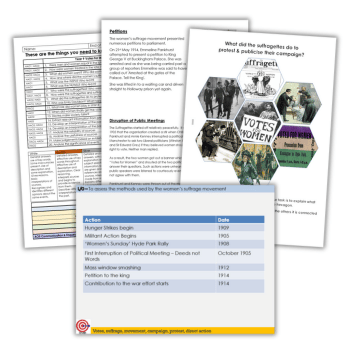
This free suffrage movement download for KS3 includes activities and information sheets to explore the social and political position of women in the past.
Women’s rights comic and resources
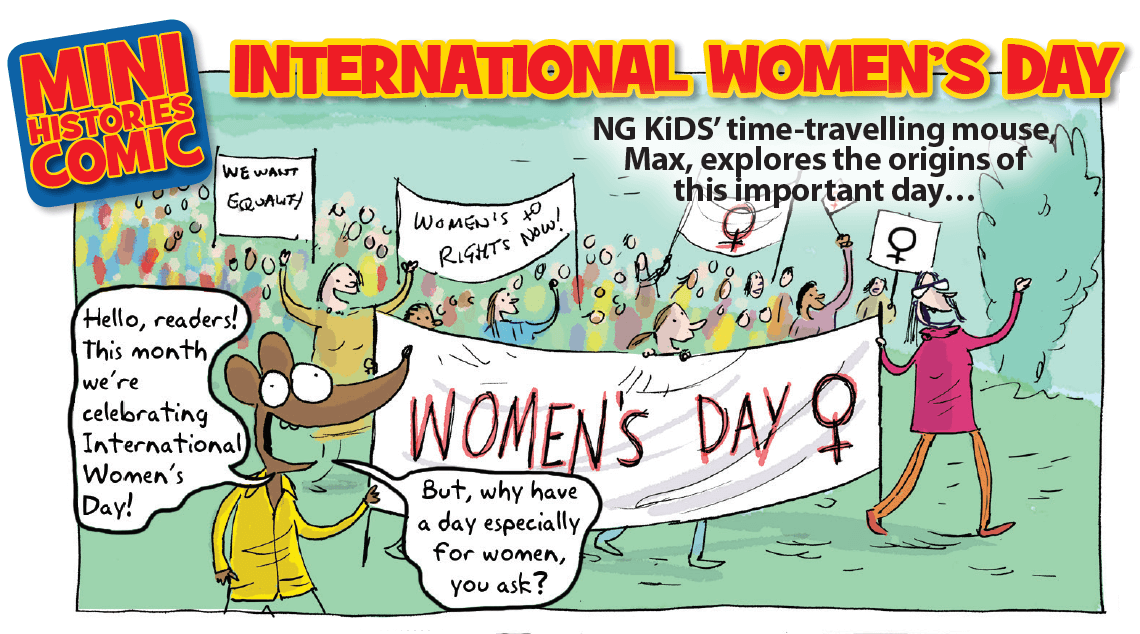
Learn all about this worldwide event and the struggle for women’s rights around the world with this resource from Nat Geo Kids. It introduces pupils to ideas about International Women’s Day in a fun comic-book format.
Your students will learn about the meaning and importance of this worldwide event, and discover the history behind it.
TrueTube videos
TrueTube’s award-winning free resources for RE, PSHE and citizenship include a whole section for Women’s History Month, from ’90 Years of Feminism’ and ‘#ShoutingBack’ (about the Everyday Sexism project) to ‘Forced Marriage’.
International Women’s Day assembly and activity ideas
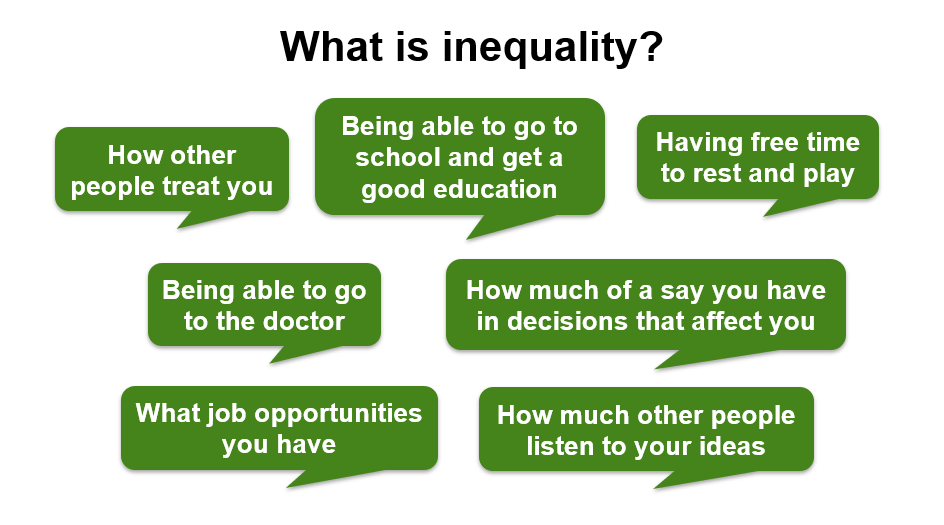
Use this short and easily adaptable upper-KS2 resource from Oxfam to introduce issues related to gender equality.
Encourage learners to think critically and inspire them to take action in their own schools and communities on International Women’s Day. Download the PDF and PowerPoint here.
Recommended reads
.png)
If you’re after some great book ideas for International Women’s Day, CLPE has produced a list of 100 titles that highlight women’s extraordinary achievements.
The list is divided into three sections:
- brief biographies of a range of women
- books about individual women
- fiction and non-fiction about the women’s suffrage movement
There’s also a separate list of picture books that feature strong, independent girl characters.
Why aren’t more women in charge in schools?

Females are still woefully underrepresented in senior leadership for education, says Victoria Cameron – but a groundswell is building for change…
Globally, teaching is a feminised workforce, yet there is a disproportionately small number of women in senior leadership positions.
In the UK, 62% of teachers in secondary schools are women but only 39% of heads are female. This imbalance is also evident at the global level. The OECD reports that over two-thirds of the education workforce are female, yet less than half of those in school leadership positions are women.
What’s more, during a time in which there is a teacher recruitment and retention crisis, one in four teachers who quit the classroom in recent years were women aged 30-39.
Enter #WomenEd – the global grassroots movement born to disrupt these statistics and improve female representation within education.
“In the UK, 62% of teachers in secondary schools are women but only 39% of heads are female”
Driven by my feminist intrigue, I joined the #WomenEd movement at the London ‘unconference’, themed ‘10% braver’. I spoke with female teachers and members of the #WomenEd leadership team, gaining valuable insight about the steps that need to be taken to create more effective, sustainable career pathways within the profession.
Glass and concrete
The limitations of the glass ceiling for women cut across sectors. However, for black, Asian, and minority ethnic (BAME) women in education, the ceiling could more aptly be described as concrete.
Alongside the existing challenges many women face – including a lack of self-confidence in pursuing career progression and a lack of available, and importantly, geographically suitable roles – BAME women in education are also often exposed to racial bias. This produces an overarching sense of isolation; something that is exacerbated by the lack of diversity in leadership roles.
It’s important that we don’t treat ‘women in education’ as a homogenous group. These individuals account for a wide range of personal experiences.
Instead, what’s encouraged is an intersectional approach that foregrounds the complex and interwoven nature of social factors. This includes class, race, disability, gender, and sexual orientation.
Career progression
Each of these forms of social stratification informs the female teaching experience in education. We should take this into consideration when looking for structural weaknesses that can help break through the ceilings inhibiting career progression.
Representation is also an important factor and post-recruitment, BAME women in education should be adequately supported with career growth opportunities.
In 2015, the National Union of Teachers published a letter calling for teachers to demographically reflect the communities they serve. This is a sentiment that was echoed by Sameena Choudry, founder of Equitable Education.
Ms Choudry, also a national leader at #WomenEd, commented on the challenges saying that “at a time when the pupil population is becoming increasingly diverse in terms of ethnicity, the equivalent representation of ethnicity and gender amongst the leadership of schools remains stubbornly low.”
Children spend the majority of their time at school. Therefore, learning environments should mirror communities in terms of gender, race, and ethnicity. This not only helps break down pupils’ misconceptions but also lays the groundwork for a more equitable future.
‘He’ for ‘she’
Far from finding themselves alienated from the cause, men have been encouraged to join the movement to increase female representation at the senior levels of education. My experience with #WomenEd has shown this to be an intentional part of the strategy.
“Learning environments should mirror communities in terms of gender, race, and ethnicity”
Chris Hildrew, headteacher at Churchill Academy and Sixth Form, and contributor to #WomenEd’s book, is one of the many fighting the good fight. He is spreading the word about how men can help provide a more inclusive work environment for their female colleagues and support equitable promotion practices.
Mr Hildrew encourages his male colleagues to check their privilege at the door and to consider what implicit biases may be forming their decision-making and judgements as a crucial first step.
Another useful practice he supports is celebrating the achievements of female teachers and implementing a reverse mentoring scheme. Difficult decision-making forms a large part of leadership roles. It’s something that men and women are equally capable of achieving.
However, the perception radically changes with the gender balance. Deferring to traditional gender stereotypes, men are seen as naturally strong leaders capable of making balanced decisions, while their female counterparts are often positioned as being unable to avoid personal bias or hidden agendas.
Reverse mentoring schemes are an effective way of allowing male mentees to learn about their female colleagues’ perspectives and experiences. This reduces barriers to progression, reducing stereotyping, and counteracting bias.
The pay gap
In 2018 it was reported that education had the third largest pay gap of all industry sectors across the UK – sitting alongside finance and construction, which traditionally, unlike education, have a masculinised workforce.
In education, the pay gap is also evident at all levels, from primary through to higher education.
However, given equal pay for equal roles is assured through legislation in the UK, in this context, the gender pay gap is less about equal pay and more about under-representation within senior ranks.
Unconscious bias
According to Vivienne Porritt, vice president at the Chartered College of Teaching and co-founder of #WomenEd, unconscious bias has a lot to answer for.
“In education, the pay gap is also evident at all levels, from primary through to higher education”
She says, “Women are trained not to promote their own agendas but instead, to focus on the needs of others”. It’s these behaviours, shaped by stereotypes at a young age, that influence the ‘female’ approach to job applications and salary negotiations.
Encouraging female teachers to close the gap, Ms Porritt suggests that women negotiate their salary from the start of their careers as this sets a positive precedent.
This is also backed by trend analysis, showing that those who don’t negotiate their salary in their first teaching job are far less likely to negotiate future offers.
Salary negotiation
This trait accompanies disheartening statistics that only 7% of women in education attempt salary negotiations in comparison to 57% of men – something that needs drastic improvement through confidence-building and supportive workplaces and networks.
Despite these challenges, though, the tide is turning, slowly but surely – and I witnessed this myself at the #WomenEd ‘unconference’ when women who had leveraged the support of their peers and this network proudly announced the career progression they had achieved over the past 12 months.
“Only 7% of women in education attempt salary negotiations in comparison to 57% of men”
The future is getting brighter for women in education and by returning to the values of confidence, collaboration, and community, the gender balance in senior leadership positions is bound to be transformed.
The roadmap to a more equitable future
- Build a pipeline to ensure female career progression
- Develop recruitment strategies that actively increase the number of female and BAME applicants
- Conduct regular reviews and appraisals
- Reflect on the attitudes of senior leadership teams
- Provide access to professional networks and mentorship
Victoria Cameron is an account executive with Mango at PLMR.
How sexist is your school?
The pay gap, #MeToo, time’s up – gender inequality has been in the spotlight for a while now, and your students want to talk to you about it, says Anna Blewett…
You might well frown on pupils who stay up late to watch shows streamed from America and flick though their social media timelines crammed with Hollywood gossip and red carpet styles.
However, one woman who knows better is Crissy Bogusz, a digital designer who creates content at Vogue International. ‘The girls I speak to are very aware of the #MeToo debate,’ she suggests.
‘They know all about harassment and inequality in cultural, racial and religious terms as well as gender. They seem to feel it’s on their shoulders, that the debate online is their incentive to speak out, and help others. They’re paying attention.’
And why is a top digital talent at the world’s most famous fashion mag any authority on teenagers? Because in her spare time Crissy is a mentor for The Girls’ Network, an empowering scheme that’s helping secondary schools right a few of our society’s wrongs.
‘You can’t be what you can’t see’
For Girls’ Network co-founder Becca Dean, the story starts in the classroom. ‘My lightbulb moment came when I was in a Teach First placement in Neasden, West London,’ says Becca.
‘It was an all-girls school where 85% were on free school meals and many came from families where for three or four generations the women hadn’t worked. They didn’t know any professional working women. On a school trip into central London one of the girls asked me why a woman she saw walking into the Gherkin was wearing a suit. I explained that she was going to work, with the men.’
This experience hints at a broader problem; how do we change our culture, and make sure our boys and girls can make the most of the educational achievements which you have devoted your career to ensuring they attain?
“They didn’t know any professional working women”
‘We have a saying,’ says Becca. ”You can’t be what you can’t see’. The data shows that in most secondary schools girls outperform boys academically, but in the world of work that academic performance by girls isn’t transferring.
So if you look if you look at ‘c-suites’ [the term encompassing CEOs, COO, CIOs], boardrooms, executive positions, and decision-making positions, they are still predominantly held by men.’
One-to-one chats
Becca’s first step to addressing the gender bias awaiting her pupils was to invite 30 professional women from her own social network to school for one-to-one chats with her top-set Year 11s.
‘It was kind of a ‘speed networking’ evening. I hoped that event would transpose back into the classroom and it did, but there were so many follow-up questions.’ This is why that first event led to monthly meetings between the Year 11 girls and their designated mentors.
‘The impact was transformational,’ says Becca. ‘Not just on academic grades, but on soft skills. Girls who were so painfully shy at the start were able to put their hands up in class and articulate an opinion. To talk about their ambitions and realise they could achieve them. A lot of headteachers were emailing me to ask if we could bring it into their schools, and I realised there’s a real need for this.’
Making connections
One such call came from Kuljit Rahelu, headteacher at Hornsey School for Girls. ‘We had found that some students, perhaps those from more affluent backgrounds, could easily arrange to visit a publisher, or a dentist surgery, through family or friendship connections,’ she starts.
“Girls who were so painfully shy at the start were able to put their hands up in class and articulate an opinion”
‘But there was a very large cohort who didn’t have access to that secondary industry, to role models or the expectation that this was a world they could be involved in. The Girls’ Network offered a doorway they could walk through with someone supporting them.’
Kuljit’s pupils are particularly aware of the societal shifts and debates that are playing out beyond the school gates. ‘I think they’re increasingly becoming part of our curriculum,’ says Kuljit.
‘We have a day in tutor groups where we look at current affairs, so as a school we have a really easy opportunity to look at the current debates. There was a lot of discussion around Harvey Weinstein when that story broke, and we played every single year group the speech that Oprah made at the Golden Globes in their assemblies.
‘What was amazing was that the kids, who are used to hearing something fairly interesting and then moving on to the next thing, were having so many discussions around the ‘Me Too’ hashtag, and the women who didn’t wear black to the Golden Globes. It was pretty amazing to see their responses to Oprah. The whole speech is about eight minutes – a long time for pupils to concentrate – but from ages 11 to 18 they were completely enthralled.’
Softer skills
They also, we can hope, now have a better chance of meeting Oprah’s expectations – a process that has got off to a good start with measurable improvement in classroom performance.
‘For us, that’s been the most successful part of our engagement with the programme and is why I’m evangelical about it,’ says Kuljit.
“From ages 11 to 18 they were completely enthralled”
‘It’s always the softer skills that will set you above any other candidate in an interview, and the biggest impact we have seen is in student confidence. Last year we were the highest-achieving school in the borough for progress and I really think that’s down to our partnerships. Girls’ Networks is one of those, and really does support what goes on in the classroom.’
How Mary Wollstonecraft blazed a trail for women’s right to education
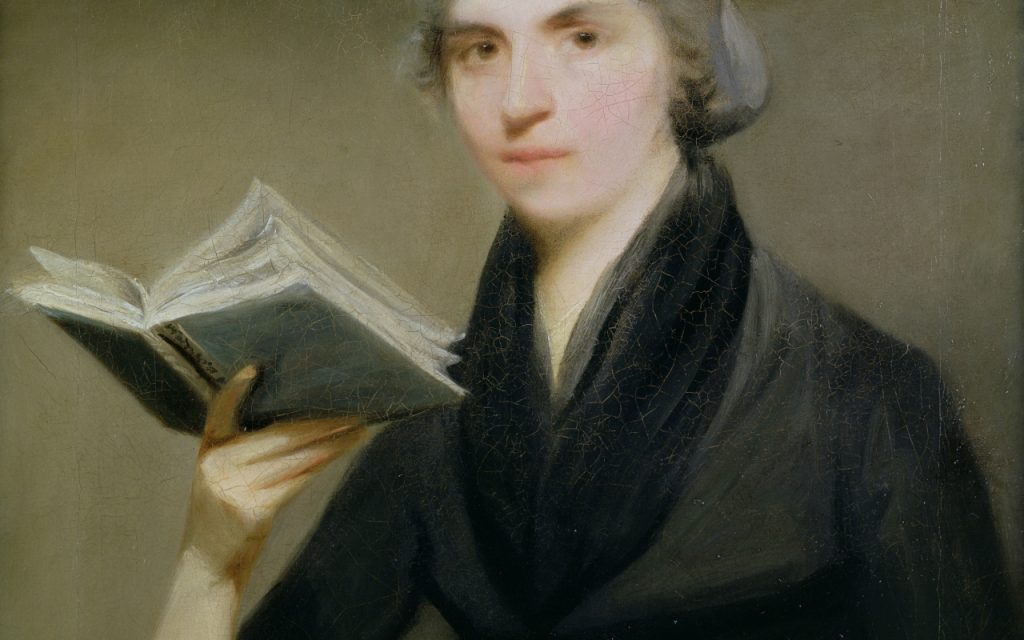
While debates were raging in France, Britain and America about equal rights for men, a woman’s lot was not considered. Wollstonecraft changed that, argues history teacher Louise Burton…
“I shall first consider women in the grand light of human creatures, who, in common with men, are placed on this earth to unfold their faculties.”
Thus spoke Mary Wollstonecraft almost 100 years before the Elementary Education Act of 1870. That’s more than a century before the rise of the Suffragette movement.
In an era of ‘Safe Spaces’ and a preponderance to value emotions more highly than reason, I would like to nominate Wollstonecraft for her outspokenness and her refusal to accept the status quo.
Mary Wollstonecraft’s book, A Vindication of the Rights of Women was published in 1792. It was both a political and an educational treatise.
Having been a strong defender of the ideas of the French Revolution in A Vindication of the Rights of Man, Wollstonecraft quickly realised that the revolutionaries were not using the word ‘man’ to mean all humanity.
When, in 1791, Talleyrand declared that government education for girls would cease at eighth grade but continue for boys, she planned and wrote her most famous work in response.
Rationality of women
For me, the importance of her work lies in its arguments about the rationality of women. While debates were raging in France, Britain and America about equal rights for men, a woman’s lot was not considered.
Wollstonecraft argued that women were capable of reason but were being denied an education. It is through the exercise of reason we become moral and political agents. Wollstonecraft broke new ground in her arguments for female education.
Previous books had often argued for education reform to enable women to be better companions to men. She didn’t deny that women would still be wives and mothers. However, she believed that the marriage laws, placing men in a dominant position over their wives, reduced a woman to a ‘mere cipher’.
“Wollstonecraft broke new ground in her arguments for female education”
In fact, receiving an education allowed women to be wives and mothers on an equal footing with their husbands: “meek wives are, in general foolish mothers”.
She was vociferously against the ‘accomplishment’-based education that girls received, believing it to be useless and decadent.
Stimulating the mind
Taking issue with Rousseau’s distinctions of the sexes in Emile, in which he wrote: “The education of the women should always be relative to the men. To please, to be useful to us, to make us love and esteem them…”, she contended that men and women should all enjoy the benefits of reason.
She argued that girls should be taught reading, writing, arithmetic and subjects ranging from natural history, botany and moral philosophy as well as physical education, to stimulate the mind.
She also radically argued for co-education; girls and boys should be schooled together. This belief that girls could learn alongside boys and hold their own is something that would still be controversial in some quarters today.
Tracing her influence
Wollstonecraft’s work inspired American education campaigners such as Margaret Fuller and Elizabeth Cady Stanton.
A Vindication of the Rights of Woman appears on the Guardian’s ‘100 best non-fiction books’ list and Virginia Woolf said of her: “we hear her voice and trace her influence even now among the living”.
We should uphold the values that Wollstonecraft championed and embodied. She took responsibility for her life, showed how a woman can succeed through hard work and through using her intellect, and she believed in the emancipatory nature of knowledge and reason.
Louise Burton is a history teacher and has worked in secondary education for over 20 years.







